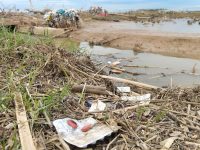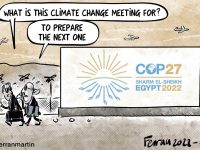
 NASA NASA |
||
|
Europe goes through an age of no economic brilliance that translates, according to the main sociology and politology schools, into a lack of confidence in traditional politics. That was what John Ashton, former UK diplomat for climate change, used to provide context for the need to have European policy that actually takes into account reality. He did so during the Climate Change, Challenges & Business Opportunities conference, organised by the partnership Knowledge & Innovation Communities devoted to climate change (Climate KIC) in the Science Park of the University of Valencia on November 15. Ashton claimed that «most of the policy is not based on reality», and blamed that fact for the «collapse of confidence in mainstream politics». The evidence, according to him, is the great scientific consensus concerning the importance of climate change, and the absence of a current to face it. Thus, Ashton considers that «models of observation of the Earth are the key to create policy based on reality», because, although information exists and is available, the important step is «communicating it correctly» so it reaches decision-making groups. This is the research corpus for António Falcão, from the Institute for the Development of New Technologies, Uninova, in Lisbon. Falcão works with models of observation of the Earth in order to improve the way we communicate scientific research. If the Portuguese researcher had to choose between a stack of paper and an interactive tool, he is clear on which one is the most effective method. His research looks for the way to create efficient digital narratives to provide added value to new research. An example of this would be the creation of a flood simulation tool to help prevent the consequences of a disaster. |
«Models of observation of the Earth are the key to create policy based on reality» |
|
|
|
«Big data sets challenges due to its global, immediate nature. How to confront its variety, its size and speed? How to manage increasingly interdisciplinary information?» |
|
|
During his intervention in the conference, Falcão highlighted information availability as one of the challenges of the digital age. The amount of information produced increases every day –this is known as big data–, and it sets challenges due to its global, immediate nature. How to confront its variety, its size and speed? How to manage increasingly interdisciplinary information? For Falcão, the solution is to create models to channel and simplify big data. A particular instance of the application of these models was suggested by Ravi Kapur, from Imperative Space. Carbon dioxide emission in cities is one of the biggest causes of atmosphere pollution, and affects global warming and climate change. How much carbon dioxide is produced in a regular day in a particular city? How to reflect it in a powerful visual way? Carbon Visuals is a company creating 3D, real-time models for carbon dioxide volume. Those models have sometimes gone viral, for instance the one showing the Empire State Building lost in a sea of carbon dioxide, only with the emissions of one day. These powerful ways to communicate scientific research are, also for Kapur, an essential tool to «get scientific research closer to decision-making instances». Kèlsang Bas. Journalism student, University of Valencia. |
||

 Kèlsang Bas
Kèlsang Bas



